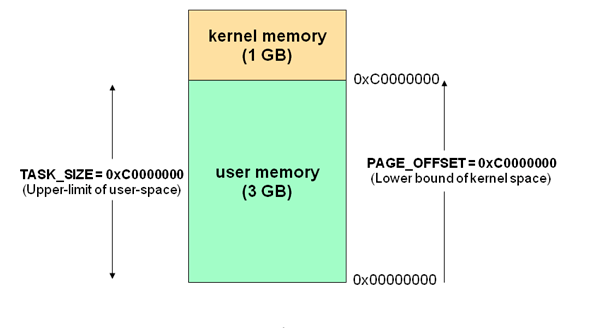 Operation and Maintenance
Operation and Maintenance Linux Operation and Maintenance
Linux Operation and Maintenance Detailed explanation of port occupancy check operation in Linux
Detailed explanation of port occupancy check operation in Linux
Detailed explanation of port occupancy check operation in Linux
In the Linux operating system, network communication is realized through ports, and different ports correspond to different network services or application. During the development or operation and maintenance process, we often encounter the need to check whether a certain port is occupied to ensure that the service can start normally. This article will introduce in detail how to check port occupancy in a Linux environment, including code examples written using command line tools and programming languages.
1. Use command line tools to check port occupancy
- netstat command
netstat is a command line tool used to display network status information. Through it, you can view the open ports and corresponding processes in the system. The following are some common options for the netstat command:
- -t: Display TCP ports
- -u: Display UDP ports
- -n: Display number format (not Resolve domain name)
- -p: Display process identifier and process name
By combining these options, you can use the following command to view all listening ports and corresponding processes in the system:
netstat -tulnp
- ss command
ss is an alternative tool to netstat, with better performance and simpler usage. Similar to netstat, ss can also check port occupancy. The following is an example of a commonly used ss command:
ss -tlnp
This command will display all TCP ports in the listening state and the corresponding processes in the system.
2. Use programming language to write code to check port occupancy
In addition to command line tools, we can also use programming language to write code to check port occupancy. The following uses Python as an example to show how to check port occupancy through the programming language.
import socket
def check_port(port):
try:
s = socket.socket(socket.AF_INET, socket.SOCK_STREAM)
s.bind(("0.0.0.0", port))
s.close()
return True
except Exception as e:
return False
port_to_check = 8080
if check_port(port_to_check):
print(f"端口 {port_to_check} 可用")
else:
print(f"端口 {port_to_check} 已被占用")The above is a simple Python script that checks whether the specified port is occupied by creating a socket connection. By calling the check_port function and passing in the port number to be checked, the occupancy of the port can be obtained.
Summary:
This article details how to check port occupancy through command line tools and programming languages in the Linux environment. By using netstat, ss commands or writing Python code, we can easily obtain the port occupancy status, helping us ensure the normal startup and operation of system services. I hope the above content will be helpful to readers in practical work.
The above is the detailed content of Detailed explanation of port occupancy check operation in Linux. For more information, please follow other related articles on the PHP Chinese website!
 7款颜值当道的 Linux 操作系统 !Feb 09, 2024 pm 01:30 PM
7款颜值当道的 Linux 操作系统 !Feb 09, 2024 pm 01:30 PMLinux的发行版有很多,这里罗列7个漂亮的Linux发行版,可以说是Linux操作系统界的颜值担当了。elementaryOS网站:https://elementaryos.cnelementaryOS操作系统是最漂亮的Linux发行版之一。它基于macOS外观,同时为Linux用户提供了出色的用户体验。如果用户已经习惯使用macOS,则使用elementaryOS不会有任何问题。另外,elementaryOS操作系统基于Ubuntu,因此用户也可以轻松找到大量应用程序来完成任务。elemen
 什么是Linux内核空间与用户空间?Feb 05, 2024 pm 12:57 PM
什么是Linux内核空间与用户空间?Feb 05, 2024 pm 12:57 PM内核空间和用户空间对于32位操作系统而言,它的寻址空间(也称为虚拟地址空间或线性地址空间)大小为4G(即2的32次方)。这意味着一个进程可以拥有最大4G的地址空间。操作系统的核心是内核(kernel),它是与普通应用程序分离的,有权限访问受保护的内存空间和底层硬件设备。为了保证内核的安全,现代操作系统通常限制用户进程直接操作内核。通常,这通过将虚拟地址空间划分为两个部分来实现,即内核空间和用户空间。就Linux操作系统而言,最高的1G字节(从虚拟地址0xC0000000到0xFFFFFFFF)被
 linux系统下svn安装有几种方式Jun 14, 2023 am 10:50 AM
linux系统下svn安装有几种方式Jun 14, 2023 am 10:50 AMlinux系统下svn安装方式常见有3种:1、使用操作系统预编译的软件包工具,如在“Ubuntu/Debian”上使用“sudo apt-get update”“sudo apt-get install subversion”进行安装;2、从源代码编译安装,官网下载源代码然后在Linux终端执行命令进行编译和安装;3、使用第三方包管理器如“Yum”进行安装,注意依赖项问题即可。
 统信uos安装的配置要求Feb 09, 2024 pm 07:03 PM
统信uos安装的配置要求Feb 09, 2024 pm 07:03 PM在这里为大家介绍一下统信uos安装的配置要求,统信uos是一款基于Linux内核的国产操作系统,具有稳定、安全、易用等特点,因此在国内得到了广泛的应用,为了确保统信uos的顺利安装和运行,我们需要了解它的配置要求。硬件配置统信uos的安装对硬件有一定的要求,具体如下:处理器:x86或x86_64架构的处理器,建议使用主频在1GHz以上的处理器。内存:至少2GB内存,建议使用4GB或以上内存。硬盘:至少20GB可用空间的硬盘,建议使用SSD固态硬盘以提高系统运行速度。显卡:支持DirectX9.0
 Linux怎么识别到我插入的设备USB设备是什么设备的呢?Feb 09, 2024 pm 02:15 PM
Linux怎么识别到我插入的设备USB设备是什么设备的呢?Feb 09, 2024 pm 02:15 PM一、前言在学习Linux操作系统时,你是否曾经有过这样的疑问:为什么我们的电脑能够识别并使用不同的USB设备呢?为什么Linux系统不会把鼠标当成键盘来使用呢?让我们一起来探讨一下USB设备在Linux系统中的识别和加载过程。二、USB设备的识别和加载当我们将一个USB设备插入电脑时,Linux内核会自动检测并加载相应的驱动程序,使设备能够正常工作。接下来,我们将深入探讨USB设备在Linux系统中的识别和加载过程。2.1USB控制器检测设备插入USB控制器是一个硬件设备,用于控制USB总线上的
 如何在文件管理器中隐藏文件和文件夹Jan 12, 2024 am 08:51 AM
如何在文件管理器中隐藏文件和文件夹Jan 12, 2024 am 08:51 AM如果一个系统被多个用户使用,你或许出于个人原因想在文件管理器中隐藏一些文件或文件夹不让其他人看到(绝大多数用户不会对Linux系统进行深入了解,所以他们只会看到文件管理器列出的文件和文件夹),我们有三种方法可以来做这件事。此外,(除了隐藏)你还可以使用密码保护文件或文件夹。在这个教程中,我们将讨论如何用非重命名的方法在文件管理器中隐藏文件和文件夹。我们都知道,通过以点(“.”)前缀重命名一个文件或文件夹的方式,可以在Linux中将该文件或文件夹隐藏。但这不是隐藏文件或文件夹的正确/高效方式。一些
 如何在Linux下使用scp命令通过ssh安全传输文件Feb 09, 2024 pm 01:39 PM
如何在Linux下使用scp命令通过ssh安全传输文件Feb 09, 2024 pm 01:39 PM在Unix或Linux操作系统上,scp实用程序(securecopy)与更著名的命令cp类似,但用于在安全加密的网络上在主机之间传输文件和目录。由于它依赖于ssh进行数据传输,因此它提供了相同的安全性并使用了相同的身份验证ssh。与rcp不同,scp命令将提示您输入用于身份验证的密码(如果需要)。在本文中,我们将深入研究Linux中文件的安全传输,并学习如何使用scp命令。通过对常用scp开关和选项的详细解释和示例用例,您将了解如何使用此实用程序。在开始之前了解以下这些很重要由于scp依赖于s


Hot AI Tools

Undresser.AI Undress
AI-powered app for creating realistic nude photos

AI Clothes Remover
Online AI tool for removing clothes from photos.

Undress AI Tool
Undress images for free

Clothoff.io
AI clothes remover

AI Hentai Generator
Generate AI Hentai for free.

Hot Article

Hot Tools

SecLists
SecLists is the ultimate security tester's companion. It is a collection of various types of lists that are frequently used during security assessments, all in one place. SecLists helps make security testing more efficient and productive by conveniently providing all the lists a security tester might need. List types include usernames, passwords, URLs, fuzzing payloads, sensitive data patterns, web shells, and more. The tester can simply pull this repository onto a new test machine and he will have access to every type of list he needs.

MinGW - Minimalist GNU for Windows
This project is in the process of being migrated to osdn.net/projects/mingw, you can continue to follow us there. MinGW: A native Windows port of the GNU Compiler Collection (GCC), freely distributable import libraries and header files for building native Windows applications; includes extensions to the MSVC runtime to support C99 functionality. All MinGW software can run on 64-bit Windows platforms.

SublimeText3 Mac version
God-level code editing software (SublimeText3)

SAP NetWeaver Server Adapter for Eclipse
Integrate Eclipse with SAP NetWeaver application server.

Zend Studio 13.0.1
Powerful PHP integrated development environment






